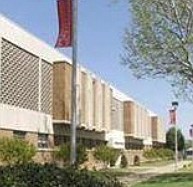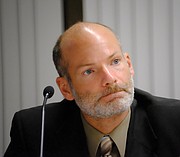Energy numbers shed light on RPS spending, savings
Jeremy M. Lazarus | 5/31/2019, 6 a.m.
Richmond expects to spend $8 million to $10 million to ensure three new schools meet the standard of a national energy conservation program, according to the Joint Construction Team that is overseeing the work.
But there is no evidence the expenditure will generate the kind of significant savings to justify the cost of meeting the Leadership in Energy and Environmental Design, or LEED, standards, according to data on energy spending from Richmond Public Schools.
The issue is raising serious questions as to whether the Joint Construction Team is paying a premium price for a meaningless label, thus investing extra money in the three schools and reducing the money available for other projects.
The findings on LEED are emerging as the Richmond School Board prepares to meet Monday, June 3, to review recommendations to reduce the overall cost of constructing a new middle school and two elementary schools. Their collective price tag could run $148 million, or $38 million more than the original $110 million estimate from 2017.
According to school energy data obtained by the Richmond Free Press, RPS is paying bigger total bills for electricity and heat for its newest buildings compared with the bills for similar-sized older buildings.
For example, RPS spent $305,805 on electricity and natural gas for Huguenot High School between July 1, 2017, and June 30, 2018. The school, which has space for around 1,400 students, opened in 2015.
By comparison, the energy bill at Armstrong High School, which dates to the late 1960s and is nearly 50 years older, totaled $264,574, or about $41,000 less for the same period. And the energy bill for John Marshall High School, which is 55 years older than Huguenot, ran $247,630, or nearly $60,000 less.
Armstrong and John Marshall are a bit smaller than Huguenot, but have close to the same number of students as Huguenot — 1,255 for Armstrong and 1,391 for John Marshall. Unlike those schools, Huguenot was awarded the LEED gold standard from the U.S. Green Building Council, which created LEED to encourage the design and construction of more energy-efficient buildings.
A similar check of middle schools finds that RPS’ total spending on energy for the newest middle school, Martin Luther King Jr., outstrips energy spending at two older middle school buildings, Lucille Brown and Thomas Boushall, that have similar enrollments. Martin Luther King Middle has space for 876 students, compared with 779 for Brown and 885 for Boushall.
RPS spent $198,671 in the 2017-18 fiscal year on energy for Martin Luther King, which opened in 2014.
The energy bill for Lucille Brown was $172,424, or about $26,000 less, even though Brown Middle School is 15 years older and was not LEED certified. And the energy bill for electricity and natural gas for Boushall, which dates to 1986, totaled $129,552, or about $68,000 less.
Similar findings appear with the city’s elementary schools. Energy costs to heat, cool and light the newest buildings, Oak Grove-Bellemeade and Broad Rock, are similar to the energy costs at Linwood Holton, which was built in the late 1990s.
School Board member Jonathan Young, 4th District, is raising questions about the need for LEED certification for the three new schools. He said RPS officials told him that the LEED-certified buildings are not only energy hogs, but also cost more to operate and maintain.
According to the minutes of the Joint Construction Team, whose members include city Chief Administrative Officer Selena Cuffee-Glenn and Richmond Public Schools Superintendent Jason Kamras, the cost of gaining LEED Silver certification is projected to add about 8 percent to the buildings’ construction cost — or more than $8 million based on current projections and possibly as much as $10 million given rising costs.
The Joint Construction Team does not explain why it is using LEED. Instead, in its minutes, the JCT points the finger of blame at City Council for requiring LEED certification for new public buildings, which includes a middle school to replace Elkhardt-Thompson and replacement elementary school buildings for George Mason and Greene elementary schools.
The JCT reported in its minutes that it is requiring contractors to meet LEED standards solely because there is an ordinance on the books rather than because the extra cost for the LEED certification would be recouped from energy savings. Indeed, reduction of energy costs does not appear to come up in the JCT minutes.
While City Council imposed a LEED requirement for new buildings in 2014, neither the city nor the school system has conducted a study to determine if the cost of participation in the LEED rating system saves enough money to pay back the extra cost within a reasonable time, such as five years.
The Green Building Council, itself, provides no guarantee that constructing a building to its rating standard will provide substantial energy savings. The GBC also has acknowledged that a LEED rating is not required to construct a properly insulated and energy-efficient building.








